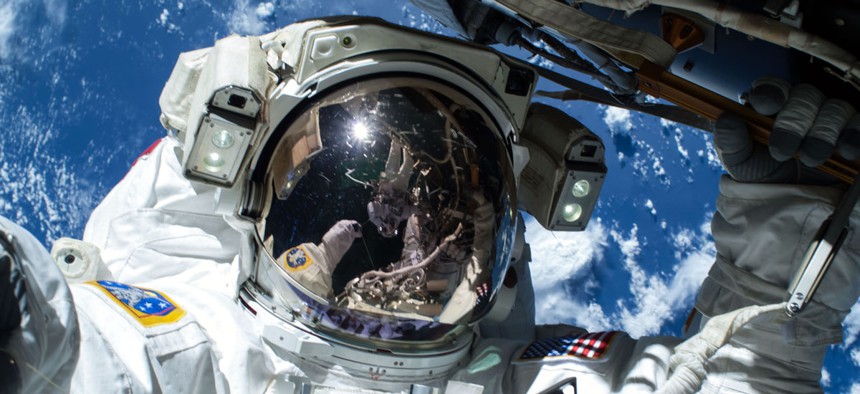NASA Has Big Plans for the Next 20 Years -- But Can Its Budget Keep Up?

NASA astronaut Barry Wilmore works outside the International Space Station on the first of three spacewalks preparing the station for future arrivals by U.S. commercial crew spacecraft, Saturday, Feb. 21, 2015. NASA
On Monday, NASA released its draft 2015 Technology Roadmaps to showcase its plans for technological innovation over the next two decades.
Spacesuits built for humans to take more interstellar strolls outside the confines of their spacecraft. Spacecraft with the ability to make smooth landings on Mars despite its inhospitable terrain. A digital tracking system to keep tabs on flights scattered across our increasingly congested skies.
These are only a fraction of the many high-tech projects NASA outlined in a new series of draft 2015 Technology Roadmaps. Released Monday, the document offered a detailed examination of the agency’s anticipated missions and technological advancements over the next two decades.
Still, NASA's budgetary problems are crowding the horizon. The agency's 2016 budget proposal included significant cuts to both planetary science and aeronautics -- two areas that play an important role in the tech roadmaps.
For example, NASA has proposed cutting more than $300 million from the Space Launch System and $77 million from the Planetary Science Division.
“I had to decide where we could pick up the most with money that we had, and aeronautics was once again an area that I had to take some funds from,” NASA Administrator Charles Bolden told a House committee during last month’s hearing on the agency's proposed budget.
The NASA Technology Roadmaps are expected to update the agency’s original set of plans, which were released in 2012. Among other changes, the new version contains an expanded focus on aeronautics, information technology and space weather.
The public has until June 10 to comment on the contents of the roadmaps.
“NASA believes sharing this document with the broader community will increase awareness, generate innovative solutions to provide the capabilities for space exploration and scientific discovery and inspire others to get involved in America’s space program,” the plan stated.
NEXT STORY: Why Driverless Cars Don't Need Windows


